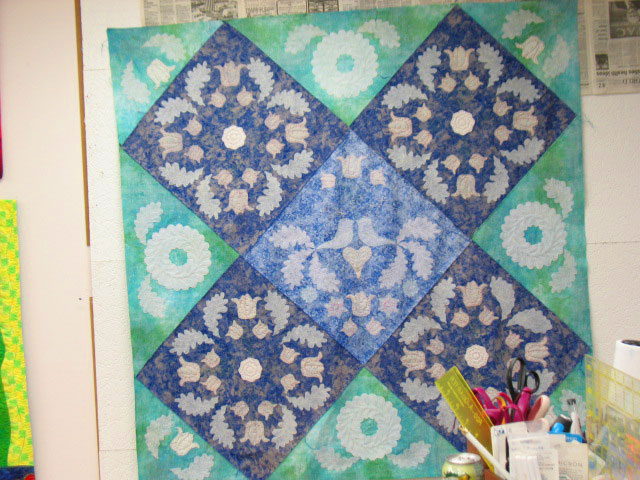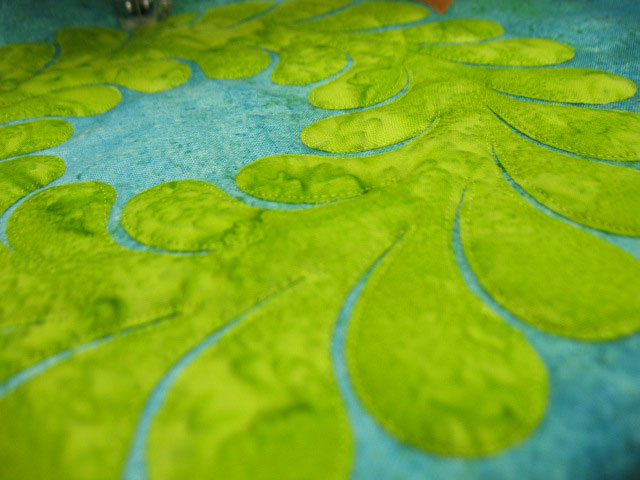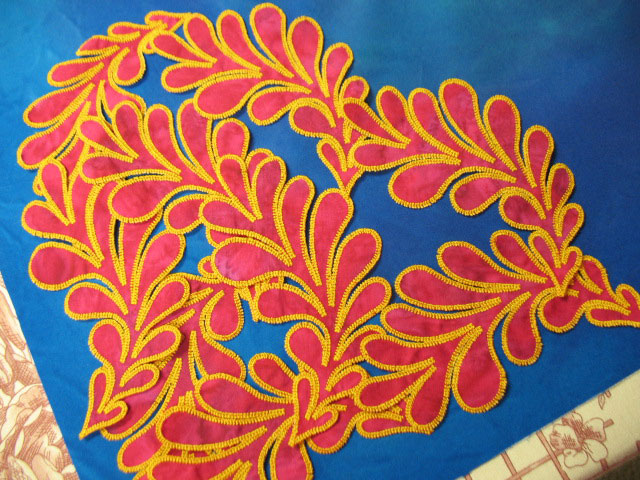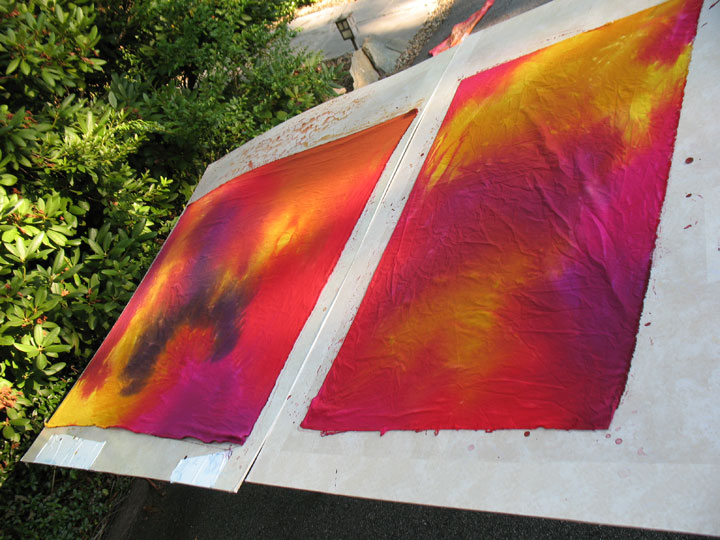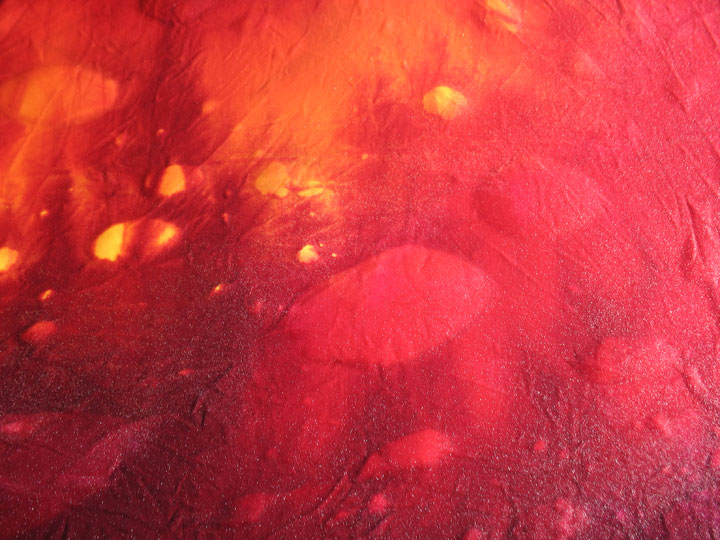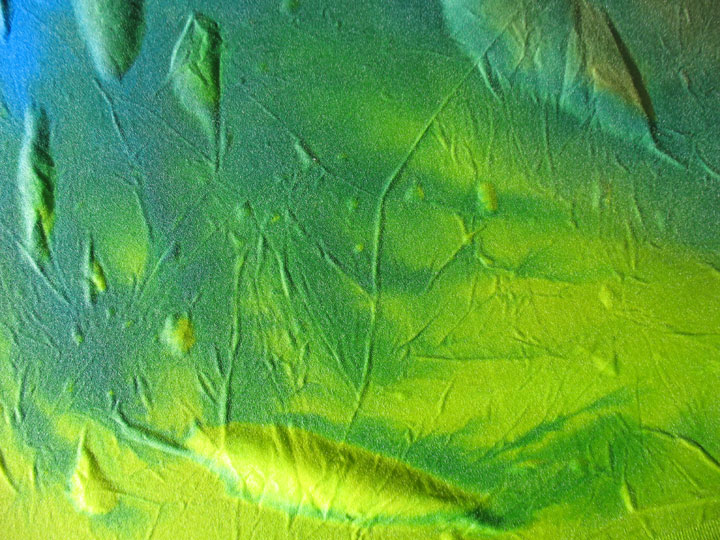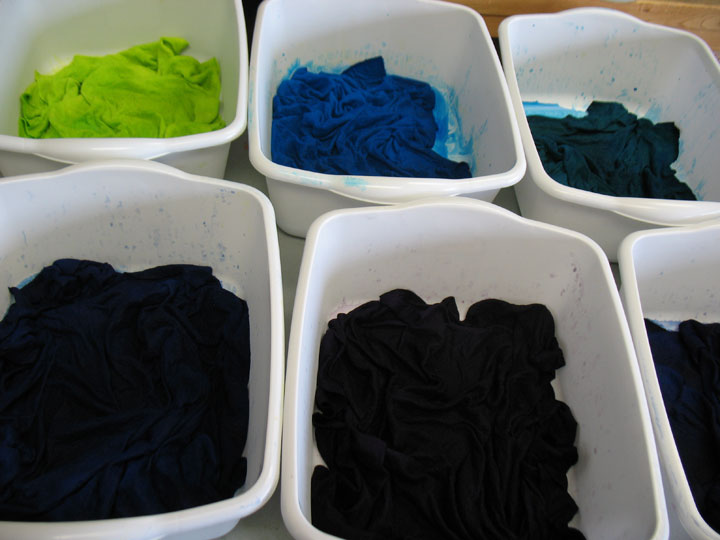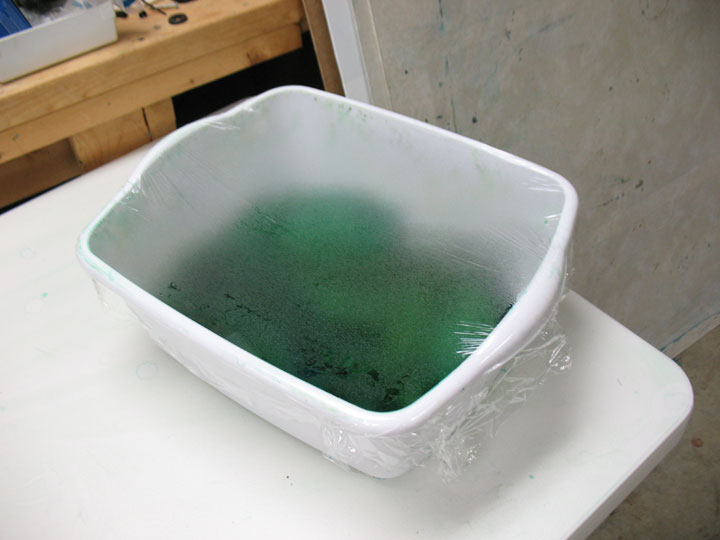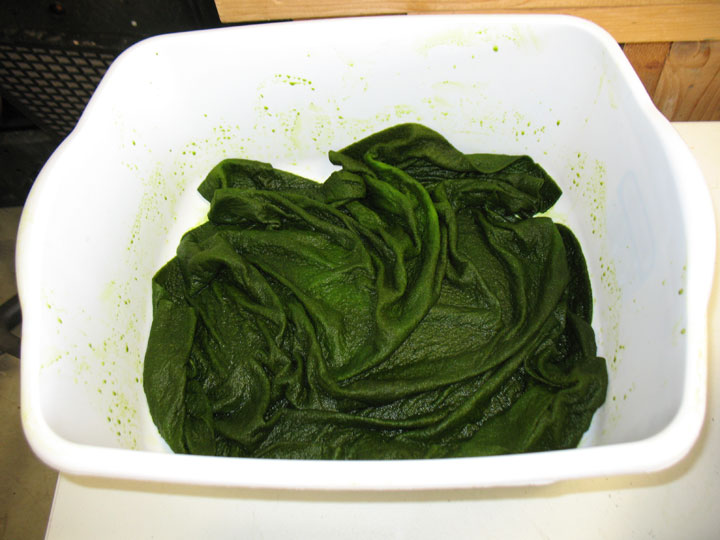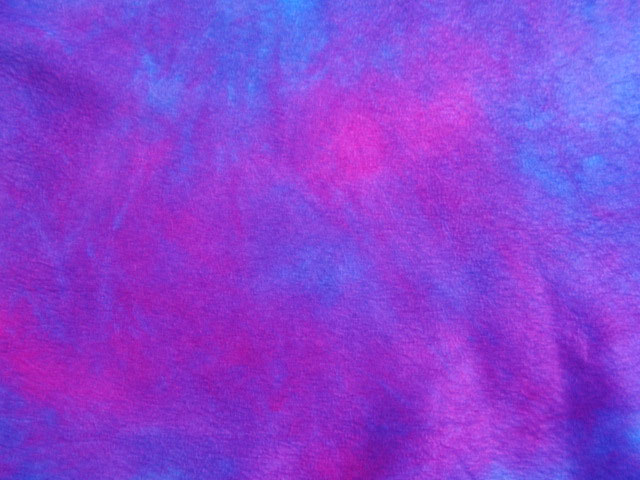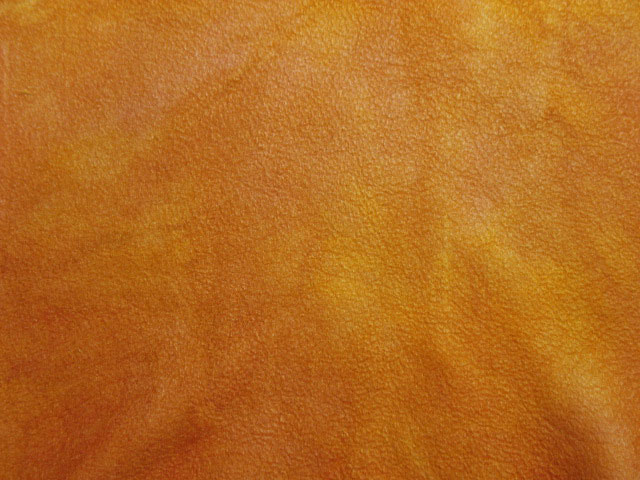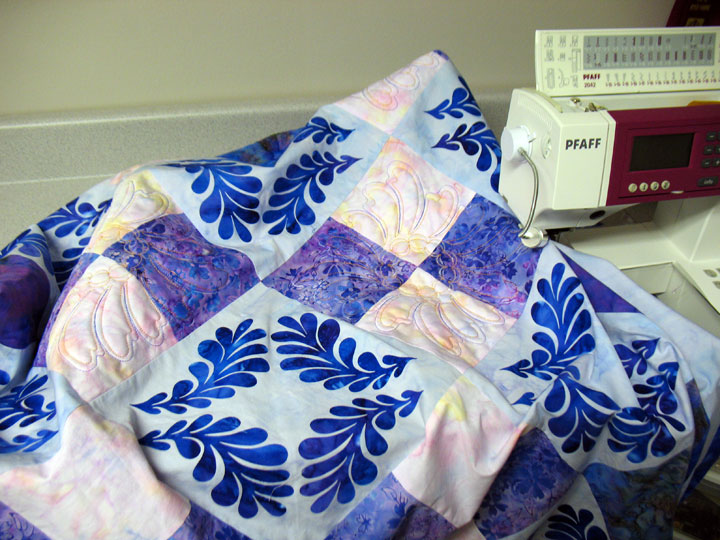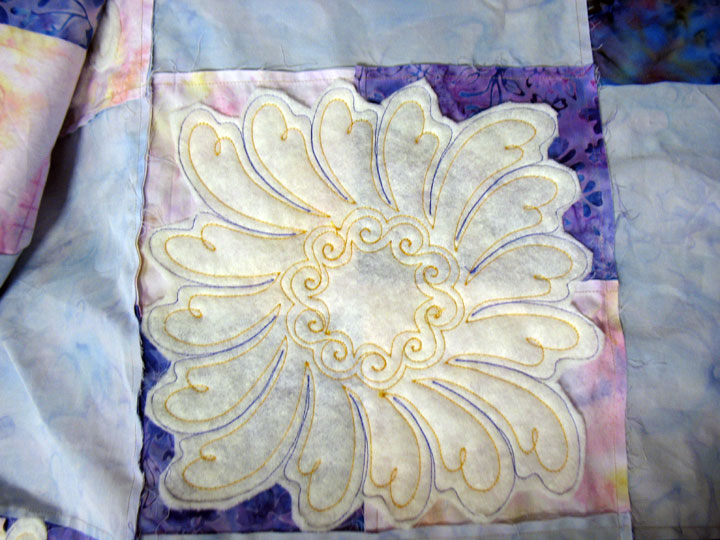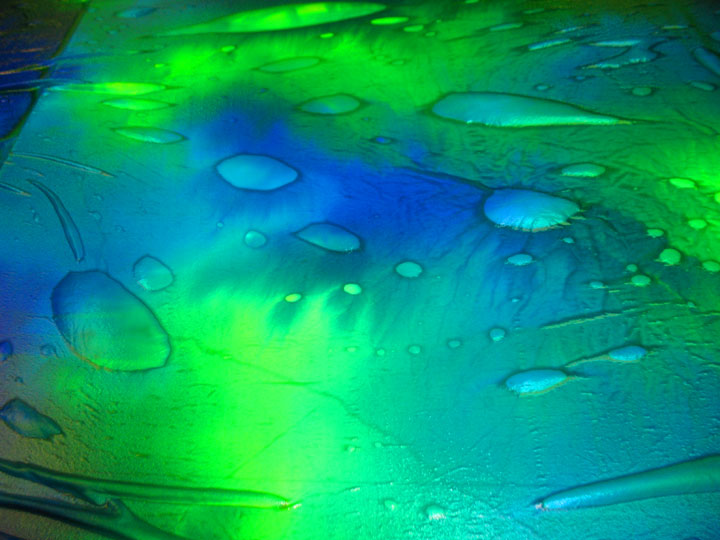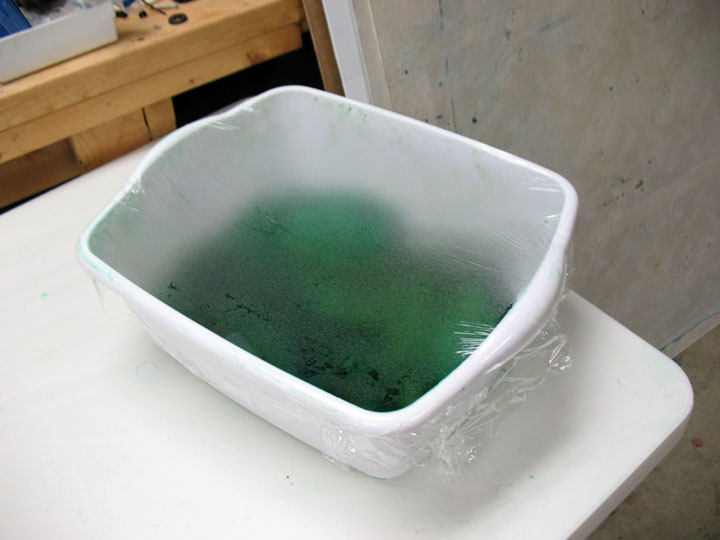June 3rd, 2009

Aren’t these just gorgeous? These are all 1-2 yards lengths of hand dyed cotton sateens, dyed last weekend in the driveway. People always ask me how I get these blending colors, and it is SO easy it should be illegal! If you enjoyed finger painting at an earlier time in your life, you will LOVE doing this! You can just about drive yourself nuts reading about how to dye fabric and frankly, if I had allowed myself to get too caught up in the directions, I’d never be doing this. I cut many corners and don’t measure out anything exactly, and yet I’ve been able to consistently get really beautiful saturated colors that are colorfast. Here’s how!
I begin with cotton sateen (from either Hancock Fabrics, the chain or Joann Fabrics; Egyptian cotton from Joann Fabrics, or silk charmeuse from Exotic Silks) and each is soaked in a tub of soda ash/water for a minimum of 10 minutes. What kind of a ratio of water/soda ash? I’m not sure…I don’t measure it out, but I’m guessing that it’s in the range of 1/2 cup soda ash to 3-5 gallons of water. Stir it so the soda ash is completely dissolved and then add your fabrics. When you’re ready to dye, wring the fabrics out really well so they’re barely damp. (BTW, save this soda ash/water solution and keep re-using it. The solution I used last weekend is now 4 months old and still going strong)! Once you’ve wrung out those fabrics, place them in the washing machine on the spin cycle. DON’T LEAVE THIS STEP OUT, because this step will hep ensure that your colors are very vivid. You are now ready to begin dyeing these fabrics!
You will use Procian MX dyes for the above fabrics; I buy mine at Dharma Trading Company. I mix 1 TBS of dye powder with 2 cups of hot water (out of the tap, not heated on the stove) and stir until it’s all dissolved. I pour each color into a squirt bottle, then rinse out my measuring cup before I begin mixing the next color. Once I’m done, I have MANY squirt bottles filled with luscious colors!

Next, I lay out a piece of fabric on a “dye platter.” This is a piece of hardboard covered w/contact paper. Using one of my squirt bottles, I squirt a color into a few “blobs” of color placed randomly on the fabric:

Using a gloved hand, I squirt another color onto the fabric, and then I start to “blend” these colors with my hand, just like with finger painting:

Can you see how this is creating several colors that just kind of “blend into” one another? So easy, so fun! See all the blotchy areas of color around the periphery? That’s messy and yucky, so I’ll need to clean up all that as I continue to work, but this is quite easy to do. Now, sometimes as you work, you are really blending these colors, and other times, you’ll want to let the colors “bleed” into one another. Here’s an example of natural bleeding that you don’t want to interfere with:

These kinds of bleed lines will look lovely once your fabric is done. Here’s a photo of that exact piece of fabric once it had been washed 3 times, and notice how much the bleed lines add:

Doesn’t that piece of fabric just make your blood boil?! Now here’s one more tip about this direct dye method: sometimes, as you’re working, you’ll develop bubbles like these:

Some dyers “spoon out” those bubbles but I don’t because I love them! Do you see how colors pool around the edges of those bubbles? This will create a really cool effect once the dyeing is done, so think of it as yet another way to make your fabric more interesting!
Now this direct dye method isn’t the only way to dye fabrics; here’s another one I did last weekend. Here, I placed a piece of silk in a tub and started squirting dye onto it:

In this case, I had a couple of yellow/gold colors that I kind of just worked into the fabric while it was in that tub. Sometimes, I will just leave this crumpled up fabric in the tub and then lay it out in the sun. In this case, I left each crumpled up wad of fabric right on the driveway to dry in the sun:

Here’s a shot of all the pieces of silk that I dyed last weekend; these make a big splash as applique figures because of that wonderful sheen of silk charmeuse:

The last method I’ll show you is how I over-dye commercial prints. Here is a 2-yard piece of a blue mottled cotton that I’ve placed in a tub with 4 cups of fuchsia:

Using gloved hands, really work that fabric into the dye, making sure that every inch of that fabric has been immersed in it:

Leave it out in the sun for a few hours and here’s the finished product:

Here are a few things I’ve learned that make the whole process easier and/or cheaper:
1. Don’t wash fabrics out by hand at the end-it’s very messy. Let every piece of fabric dry totally in the sun, then fold them up and throw them into the washing machine-no muss, no fuss! I wash once in HOT water, then 2 more times in cold water. With my particular water, they are colorfast at this point, but check on this wherever you live. You might need to wash less and you might need to wash more!
2. I don’t waste any money on Synthrapol for washing fabric, either before I dye the fabric or after. I use whatever commercial laundry detergent I happen to have on hand (currently “All” or “Tide.”)
3. I don’t cover my fabric in plastic as it’s dyeing-never found that to be necessary and it sure saves a big mess!
4. At times when I’ve run out of soda ash, I’ve just used baking soda. Everything I’ve read says it won’t work, but it’s always worked fine for me.
No more words of wisdom other than if you’ve never tried to dye fabric yet, give it a shot and you’ll be glad you did! And one more thing, here’s the added bonus! These are all “drip rags,” or fat quarters of Egyptian cotton that I used to “mop up” spillage around my dye platters:


Filed under
Fabric Dyeing.




